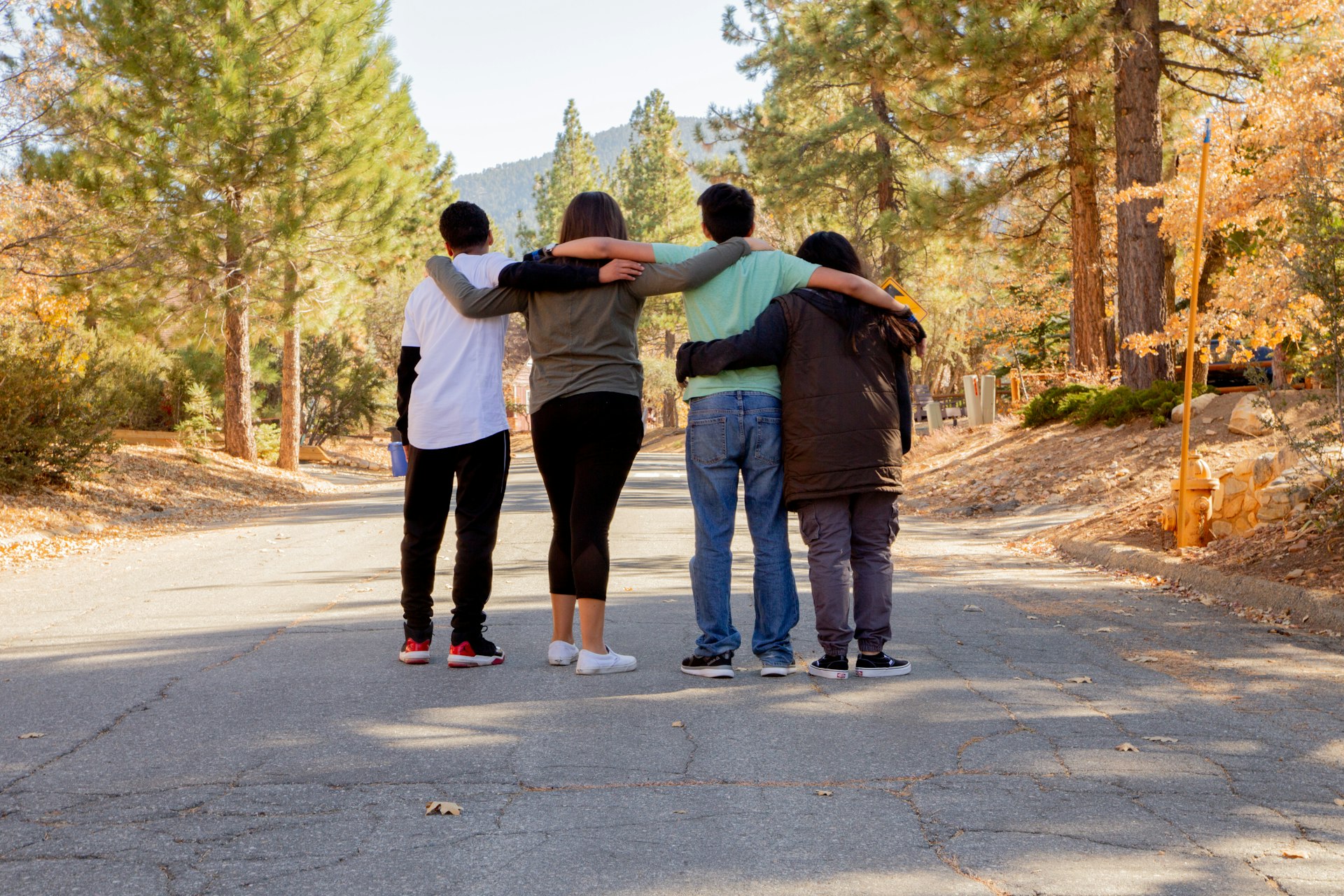How Family Volunteering Builds Stronger Bonds and Lasting Memories


Photo by Emmanuel OlguÃn on Unsplash
Why Family Volunteering Strengthens Relationships
Family volunteering is more than just a way to help others-it’s a profound opportunity for families to connect, grow, and create lasting memories together. By engaging in service activities as a family, members experience each other’s strengths and compassion in new ways, deepening respect and appreciation. Collaborative volunteering requires teamwork and communication, which helps families build unity and a shared sense of purpose. These shared experiences become treasured stories and traditions, reinforcing the family bond through meaningful action. [1] [2]
Key Benefits of Volunteering as a Family
Participating in volunteer work together offers a variety of benefits that extend far beyond the immediate act of giving. Some of the most significant advantages include:
- Strengthening Family Bonds: Working side by side toward a common goal fosters deeper connections and trust among family members. These moments of teamwork help families communicate better and appreciate each other’s contributions. [1]
- Teaching Empathy and Social Responsibility: Children and teens, in particular, learn empathy by engaging directly with community needs. These hands-on experiences make lasting impressions and encourage a lifelong commitment to giving back. [3] [4]
- Building Confidence and Self-Esteem: Taking part in meaningful work and seeing the tangible results of your efforts can boost each family member’s confidence and sense of accomplishment. [4]
- Creating Lifelong Memories: The shared experiences of volunteering-whether painting a community center, serving meals, or cleaning up a park-become cherished family stories that are retold for years. [2]
- Promoting Lifelong Learning and Skill-Building: Volunteering provides opportunities for all ages to develop new skills, from problem-solving and leadership to practical abilities like gardening or organizing events. [3]
- Supporting Better Health and Well-Being: Research suggests that volunteering is linked to improved mental and physical health, and can even contribute to a longer life. [4]
How to Get Started with Family Volunteering
Beginning your family’s volunteering journey doesn’t require special skills or a lot of free time-just a willingness to help and a sense of curiosity. Here’s a step-by-step guide to get started:
- Discuss Interests as a Family: Start by talking with your family about causes or activities you care about. Is your family passionate about the environment, helping animals, or supporting local food banks? Identifying shared interests increases engagement and enjoyment. [5]
- Research Local Opportunities: Many communities have volunteer centers or local nonprofits with family-friendly opportunities. You can contact your city’s volunteer bureau, local United Way chapter, places of worship, or community centers. For example, United Way chapters across the U.S. often host family volunteering events. [4]
- Start Small and Be Consistent: Begin with a one-time event, such as a park clean-up or a food drive. If your family enjoys the experience, consider making volunteering a monthly or seasonal tradition. This helps establish the habit and builds anticipation for future projects. [5]
- Choose Age-Appropriate Activities: Ensure the volunteer activity is suitable for all family members. Younger children may enjoy hands-on projects like sorting donations or planting trees, while teens might prefer leadership opportunities or helping with event planning. [3]
- Reflect and Celebrate: After each volunteering experience, take time to talk about what went well, what you learned, and how you felt helping others. Celebrating your efforts-maybe with a special meal or a family photo-reinforces the value of your service. [5]
Examples of Family Volunteering Projects
There are many creative ways families can give back together. Consider these real-world examples and ideas:
- Community Clean-Up: Join local events to pick up litter in parks or plant trees. These activities are often organized by city departments or environmental groups and are suitable for all ages.
- Serving Meals: Volunteer at a local soup kitchen or food pantry. Some organizations allow families to help prepare and serve food together.
- Donations and Drives: Organize a clothing or book drive in your neighborhood or at your school. Sorting and delivering donations as a family teaches organization and responsibility.
- Holiday Volunteering: Many families make service a holiday tradition, such as preparing care packages or helping out at toy drives during the winter season.
- Special Talents: Use your family’s unique skills. If you enjoy baking, make treats for a shelter; if you love crafts, create cards for seniors or hospital patients. [5]
Addressing Challenges and Finding Solutions
Families may encounter a few hurdles when starting to volunteer together. Common challenges include busy schedules, differing interests, or uncertainty about where to begin. Here’s how to overcome them:
- Time Constraints: Choose flexible or one-time events that fit into your calendar. Weekend or evening opportunities are often available.
- Different Ages and Abilities: Many organizations welcome families of all ages-look for those that specifically advertise “family-friendly” projects. Don’t hesitate to ask organizers about accommodations for young children or family members with special needs.
- Lack of Local Options: If opportunities are limited in your area, consider virtual volunteering, such as writing letters to seniors or assembling care packages at home for delivery to a local cause.
Remember, volunteering doesn’t have to be formal or require a large commitment. Even small acts, like helping a neighbor or supporting a community event, can have a big impact and offer the same bonding benefits.
Making Volunteering a Family Tradition
To maximize the impact, try making volunteering a regular part of your family routine. Some families dedicate a day each month or pick special occasions-like birthdays or holidays-to volunteer together. Keeping a family journal or scrapbook of your volunteer experiences can help you track your impact and inspire ongoing participation. Over time, these traditions reinforce the habit of giving and strengthen your family’s sense of purpose and connection. [5]

Photo by Gift Habeshaw on Unsplash
How to Find Family Volunteering Opportunities
If you’re ready to start, here’s how to find volunteer opportunities for your family:
- Contact your local United Way chapter or community center and ask about family-friendly volunteer events.
- Visit your city or county website and search for “volunteer opportunities”-many post updated lists of ongoing projects.
- Search for nonprofits in your area and reach out directly to inquire about family participation.
- If you’re interested in virtual volunteering, look for organizations offering remote service projects (such as letter-writing campaigns or assembling kits at home).
It’s helpful to call or email organizations and specify your family’s ages, interests, and availability. Many groups appreciate family volunteers and can suggest suitable roles or events.
Key Takeaways
Family volunteering is a powerful way to strengthen relationships, teach important life skills, and make a difference in your community. By approaching service as a shared journey, families can create memories, traditions, and values that last a lifetime. Whether you start with a single event or commit to a regular schedule, every act of service brings your family closer and helps build a more caring world.
References
- [1] Assisted Living Locators (2024). Family Volunteer Day: Giving Back and Growing Together.
- [2] Volunteer Connection (2025). The Benefits of Family Volunteering: Strengthening Bonds and Communities.
- [3] Points of Light (2023). 5 Benefits of Volunteering as a Family.
- [4] United Way NCA (2024). Family Volunteering Opportunities & Benefits.
- [5] Expressions of Hope (2024). The Benefits of Volunteering for Families.






